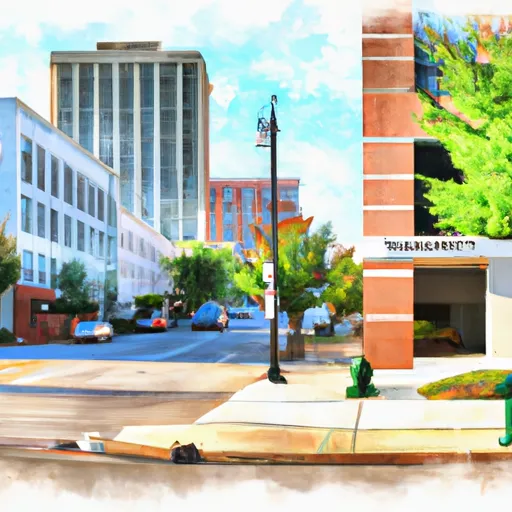-
 Snoflo Premium
Snoflo Premium
Get unlimited access to all our content
With no Ad interruptions! - Start Your Free Trial Login with existing account
Birmingham
Eden Index
Climate
7.6
•
Recreation
4.8
•
Community
2.4
•
Safeguard
5.3/10

Birmingham, Alabama is a vibrant city located in the southeastern United States. The city has a humid subtropical climate with hot summers and mild winters. The area's hydrology constituents include the Cahaba and Black Warrior Rivers, both of which are sources of drinking water for the region. Outdoor recreation opportunities in Birmingham include hiking and exploring the nearby Ruffner Mountain Nature Preserve, fishing and boating on any of the local waterways, and playing golf at one of the many courses in the area. The city is also home to the Birmingham Zoo and the Birmingham Botanical Gardens, offering opportunities to connect with nature in an urban setting.
What is the Eden Index?
The Snoflo Eden Index serves as a comprehensive rating system for regions, evaluating their desirability through a holistic assessment of climate health, outdoor recreation opportunities, and natural disaster risk, acknowledging the profound impact of these factors on livability and well-being.
Climate Health Indicator (CHI): 7.6
Birmingham receives approximately
1391mm of rain per year,
with humidity levels near 84%
and air temperatures averaging around
17°C.
Birmingham has a plant hardyness factor of
8, meaning
plants and agriculture in this region tend to thrive here all year round.
By considering the ideal temperature range, reliable water supplies, clean air, and stable seasonal rain or snowpacks, the Climate Health Indicator (CHI) underscores the significance of a healthy climate as the foundation for quality living.
A healthy climate is paramount for ensuring a high quality of life and livability in a region, fostering both physical well-being and environmental harmony. This can be characterized by ideal temperatures, reliable access to water supplies, clean air, and consistent seasonal rain or snowpacks.
Weather Forecast
Streamflow Conditions
Black Warrior - Tombigbee
Area Rivers
Black Warrior - Tombigbee
Snowpack Depths
Black Warrior - Tombigbee
Reservoir Storage Capacity
Black Warrior - Tombigbee
Groundwater Levels
Recreational Opportunity Index (ROI): 4.8
The Recreational Opportunity Index (ROI) recognizes the value of outdoor recreational options, such as parks, hiking trails, camping sites, and fishing spots, while acknowledging that climate plays a pivotal role in ensuring the comfort and consistency of these experiences.
Access to outdoor recreational opportunities, encompassing activities such as parks, hiking, camping, and fishing, is crucial for overall well-being, and the climate plays a pivotal role in enabling and enhancing these experiences, ensuring that individuals can engage in nature-based activities comfortably and consistently.
Camping Areas
| Campground | Campsites | Reservations | Toilets | Showers | Elevation |
|---|---|---|---|---|---|
| Sherling Lake City Park | 41 | 440 ft | |||
| Brierfield Ironworks Historical Park | None | 358 ft | |||
| Six Mile Creek | None | 110 ft | |||
| Karick Lake Lower - Blackwater River State Forest | None | 159 ft | |||
| Hurlburt Field Military | None | 13 ft | |||
| Jones Bluff | None | 136 ft | |||
| Blackwater River State Park | None | 28 ft | |||
| Paul M Grist State Park | 11 | 337 ft | |||
| Karick Lake Upper - Blackwater River State Forest | None | 154 ft | |||
| Prairie Creek | 40 | 135 ft |
Nearby Ski Areas
Catastrophe Safeguard Index (CSI):
The Catastrophe Safeguard Index (CSI) recognizes that natural disaster risk, encompassing floods, fires, hurricanes, and tornadoes, can drastically affect safety and the overall appeal of an area.
The level of natural disaster risk in a region significantly affects safety and the overall livability, with climate change amplifying these risks by potentially increasing the frequency and intensity of events like floods, fires, hurricanes, and tornadoes, thereby posing substantial challenges to community resilience and well-being.
Community Resilience Indicator (CRI): 2.4
The Community Resilience Indicator (CRI) recognizes that education, healthcare, and socioeconomics are crucial to the well-being of a region. The CRI acknowledges the profound impact of these elements on residents' overall quality of life. By evaluating educational resources, healthcare accessibility, and economic inclusivity, the index captures the essential aspects that contribute to a thriving community, fostering resident satisfaction, equity, and social cohesion.

